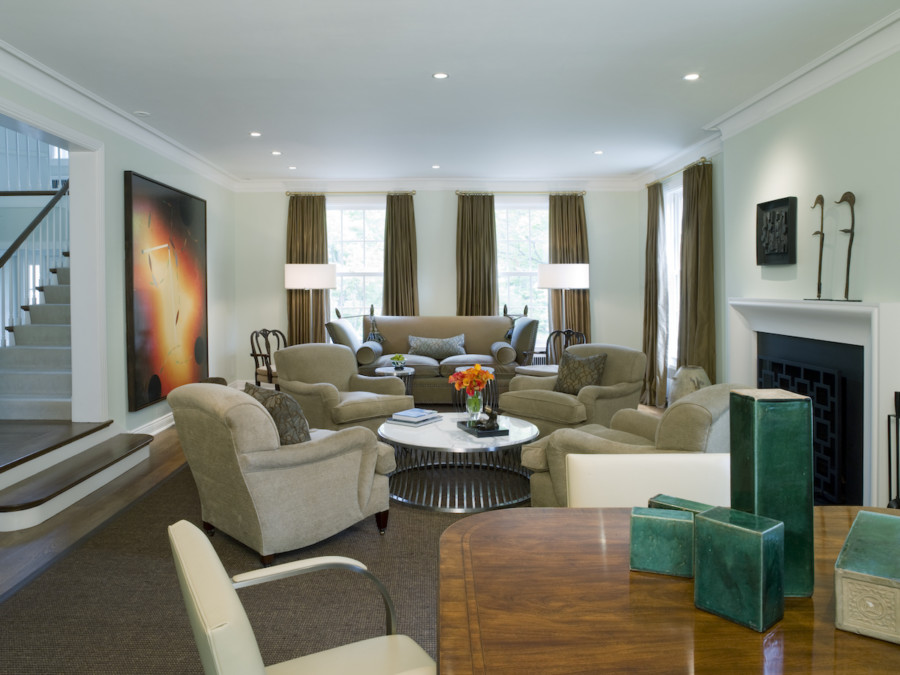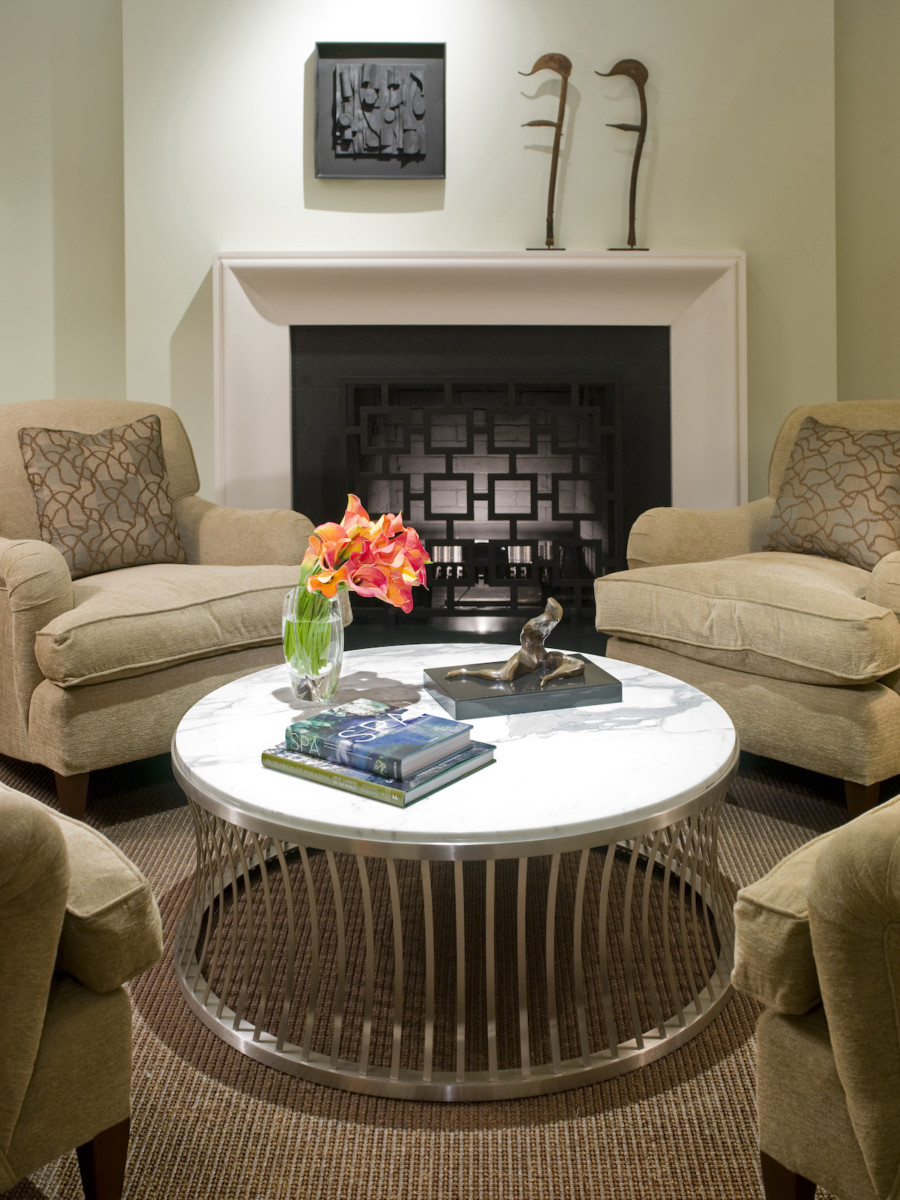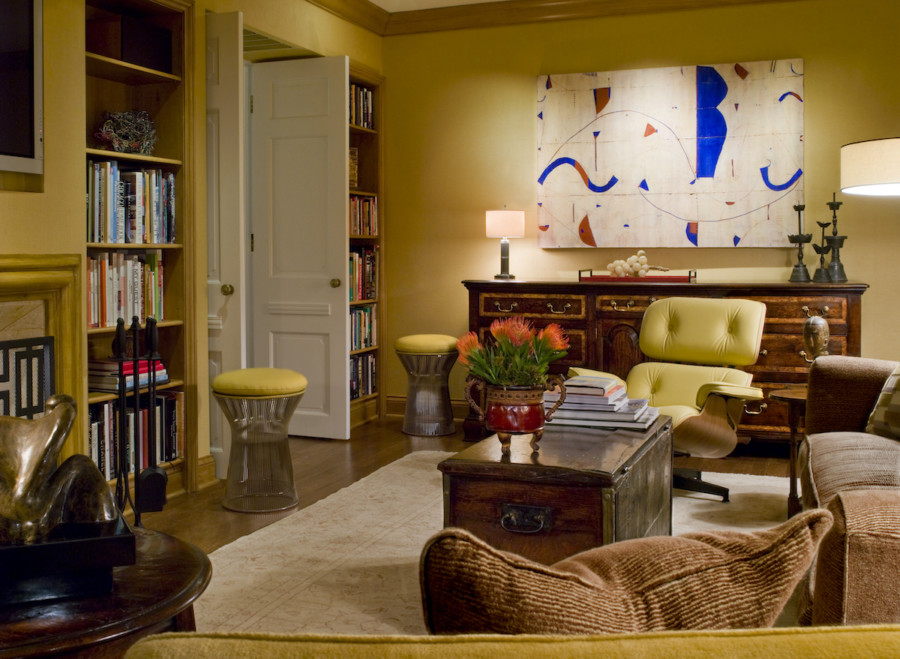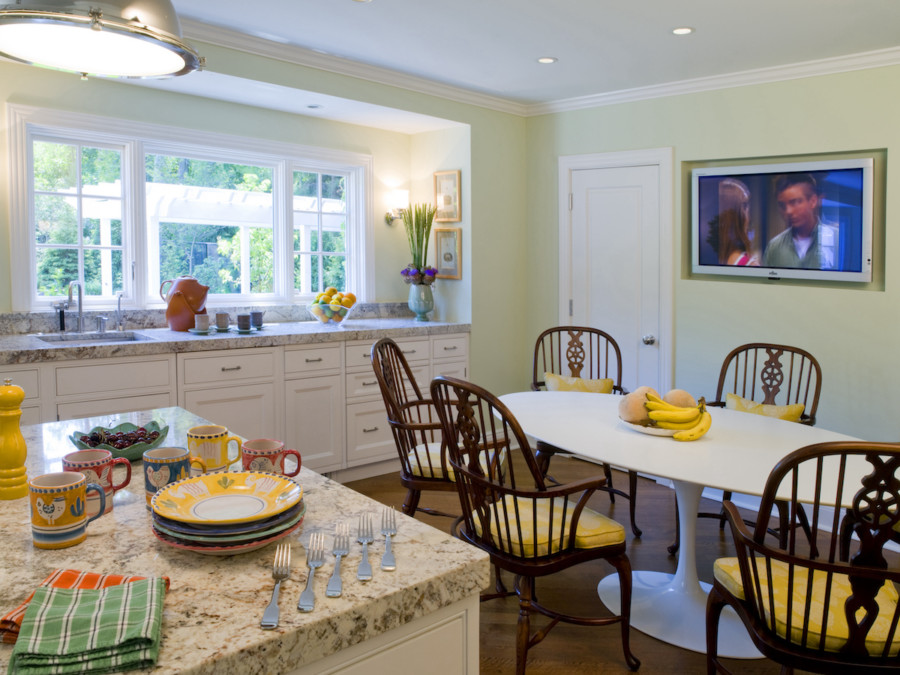









The Cary Avenue residence, circa 1932, is situated on one of the wooded ravines that border Lake Michigan. The house, designed in the Georgian style, was the boyhood home of my client. When his parents moved to warmer climes, the house complete with antique English furniture and an extensive collection of modern art, was made available to my clients for use as their primary residence. The challenge was to create a comfortable living environment for a young family whose taste was most decidedly contemporary.
As a good portion of the house had been updated in the 1970s, the first task was an extensive remodel of the interior that took two years to complete. Built in an era where formal living and entertaining was de rigueur, spaces were reimagined and assigned new functions to accommodate a young family and new mode of living. A wing was added to the house providing a three-car garage with a study and guest suite above.
The original second floor plan consisted of four-bedroom suites and live-in staff quarters. Two-bedroom suites were retained and completely renovated along with the master suite. The bedroom and bath adjacent to the master bedroom was annexed to that suite and converted into a bathroom, dressing room and closet for the wife. The staff quarters were converted into a study and exercise room. A home theatre/media room, craft room and cabana baths with dressing rooms were added to the lower level of the house, easily accessible from the pool. State of the Art mechanical systems were installed adapting a house built in the 20th century for living in the 21st.
When it came to addressing the client’s preference for modernism, their art collection was sympatico and easily combined with the modern art inherited with the house. The paintings, drawings, prints and sculpture in both collections are by masters of the 20th century allowing for a seamless mix. To reinforce the modern artwork, I integrated classic furnishings designed in the mid-20th century with the 18th and 19th century English antiques. The contrast and tension created by placing modern art and furnishings alongside period furnishings in a period house gives the interior an edge which suits the clients taste.
